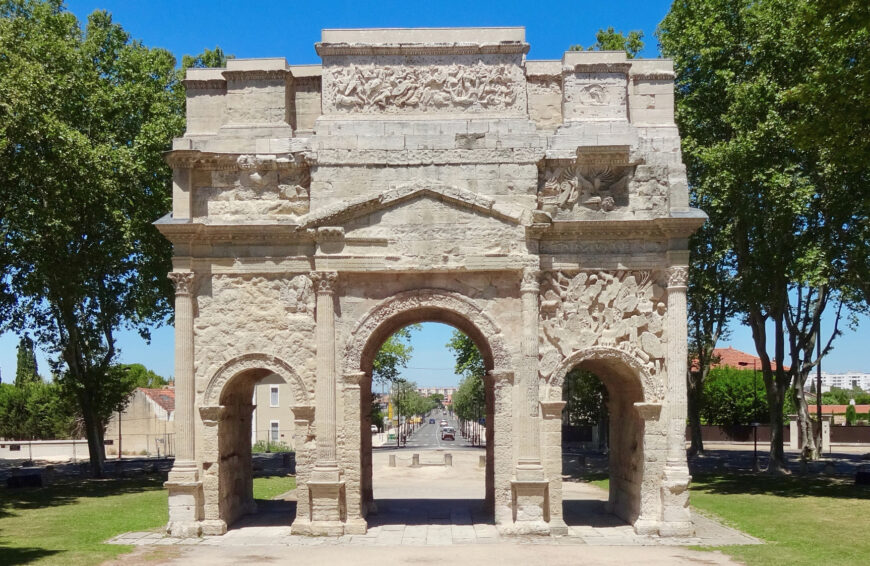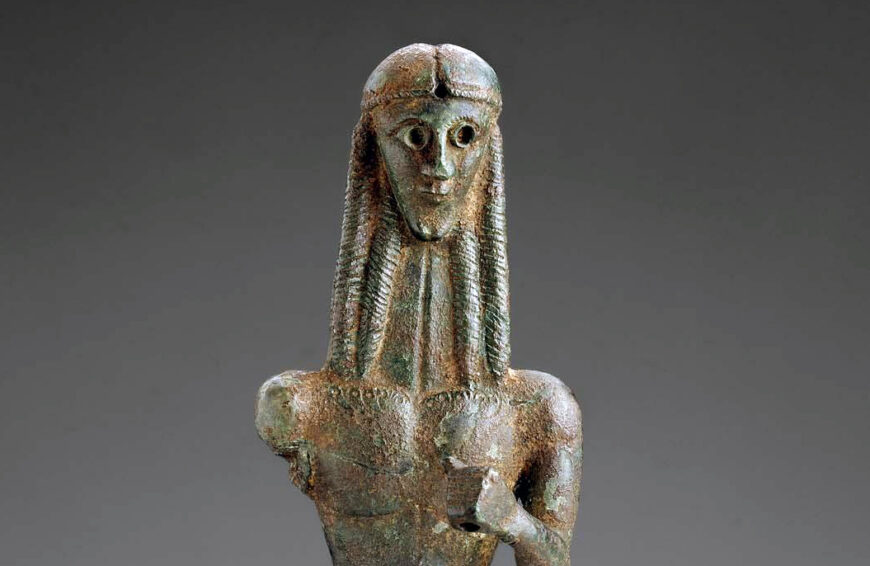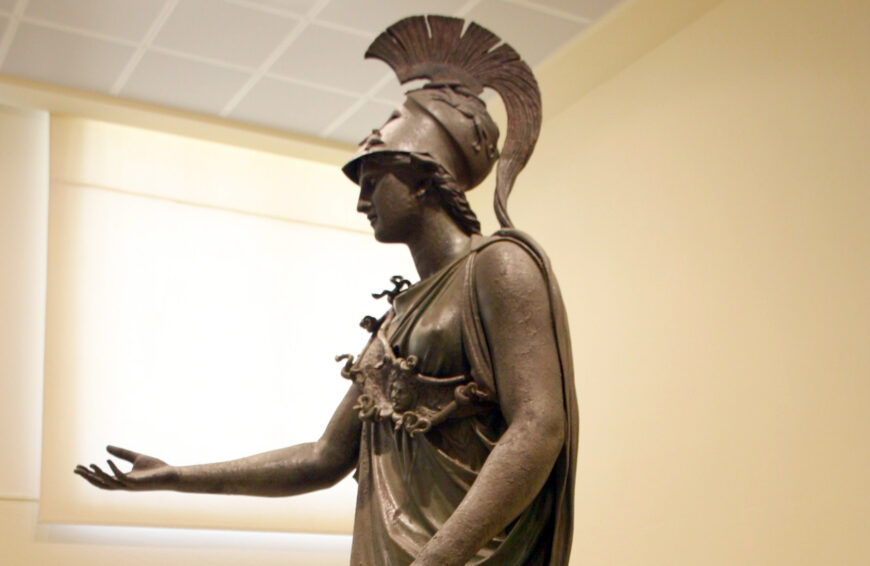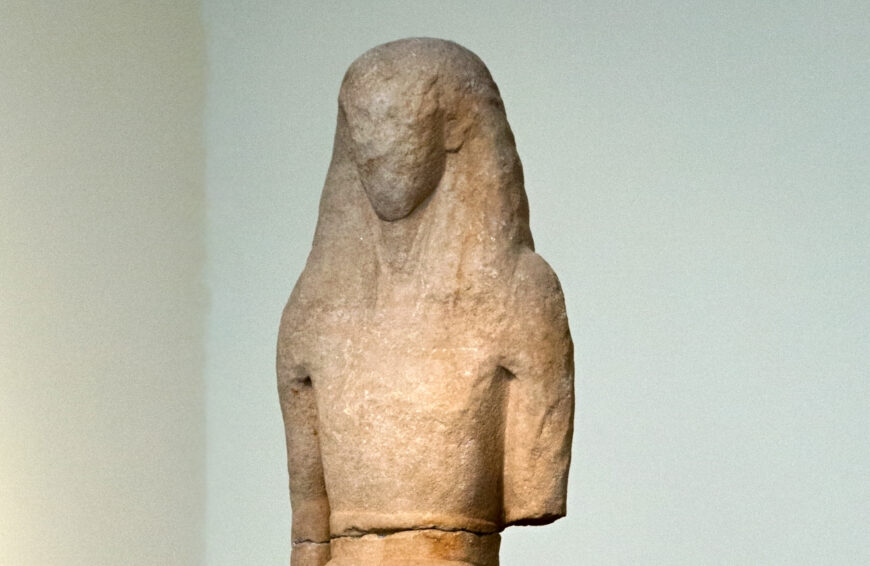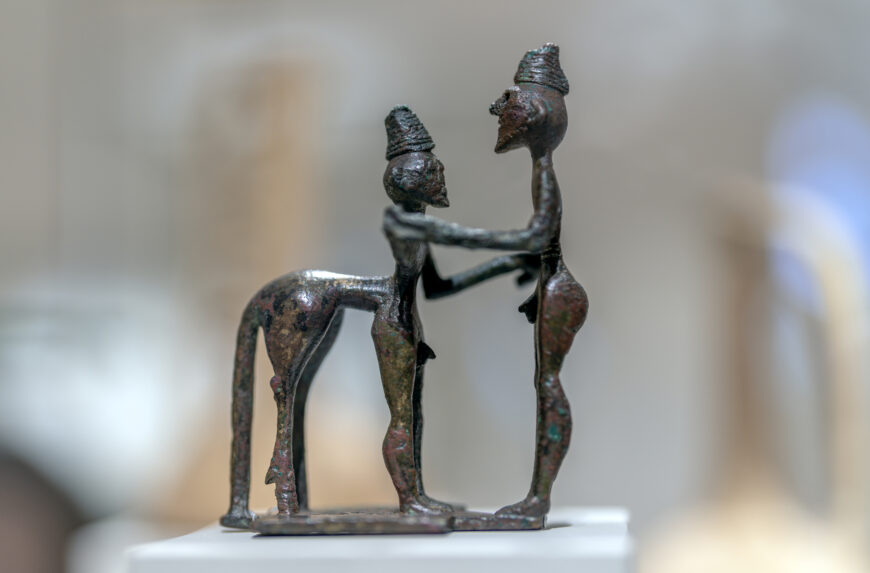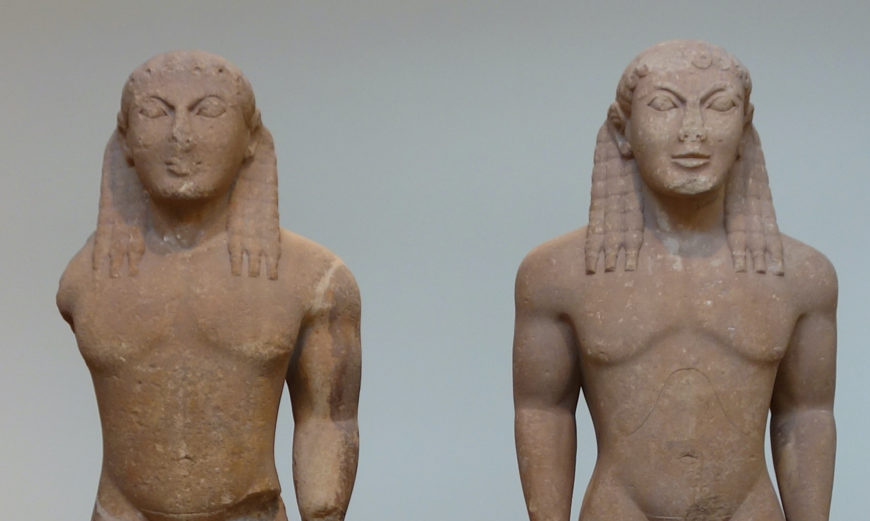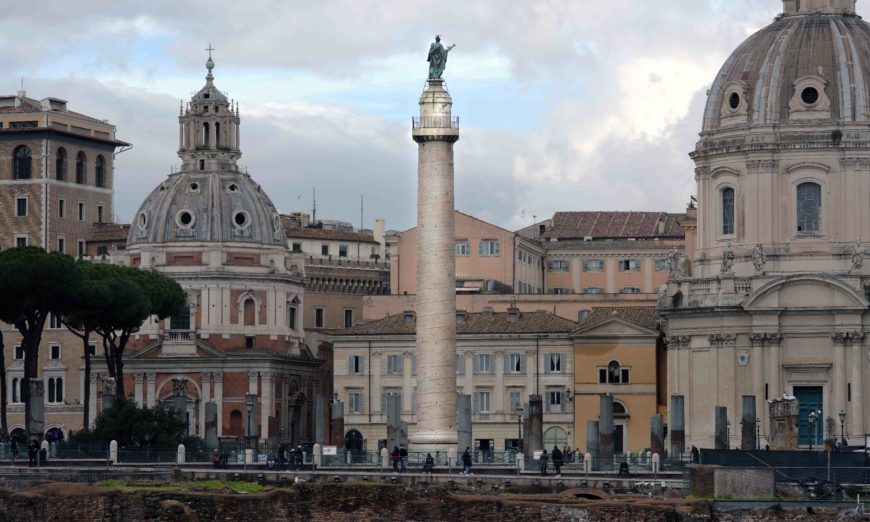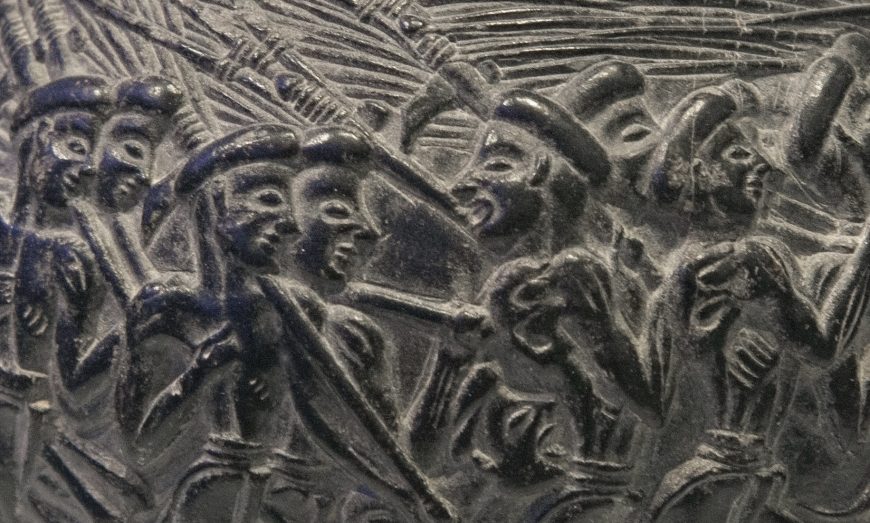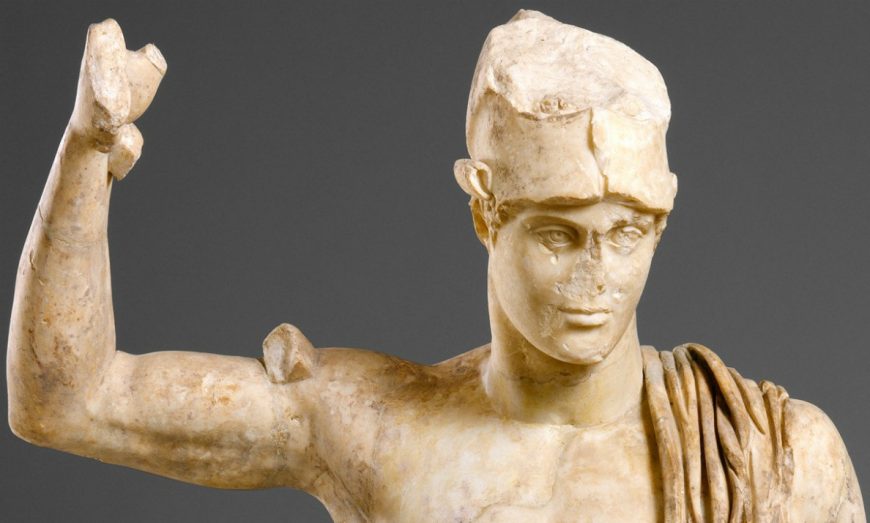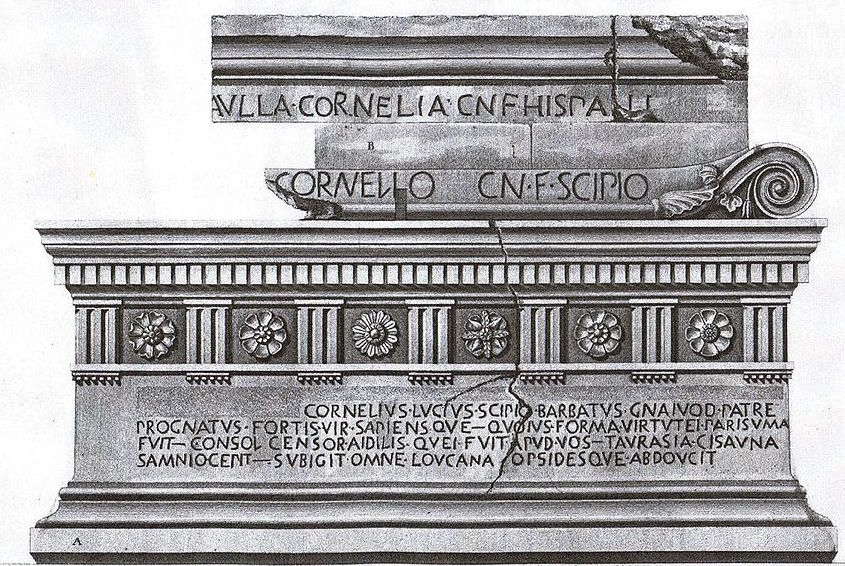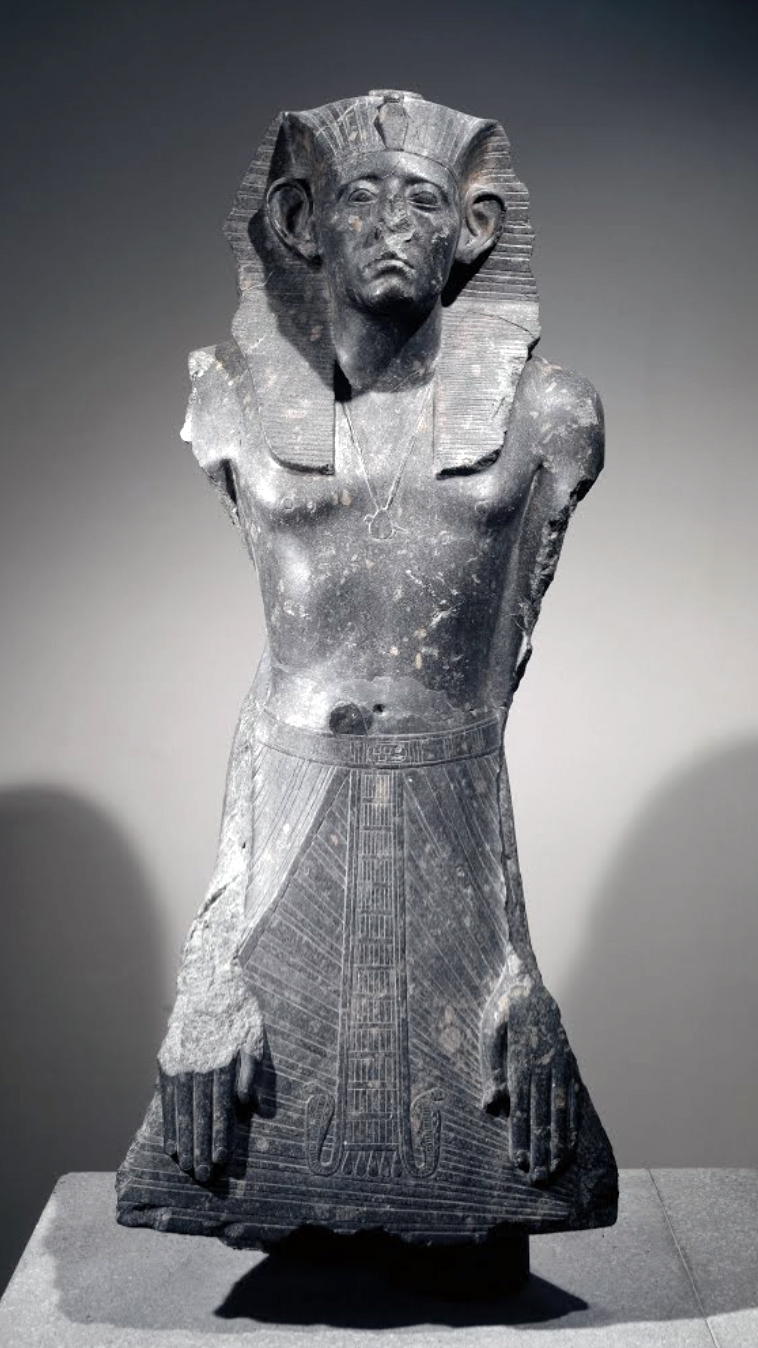
Statue of Senwosret III (Senusret III), 1874–1855 B.C.E., 12th Dynasty, ancient Egypt, incised granite (granodiorite), found at the Temple of Mentuhotep, South Sourt, Deir el-Bahari, 122 cm high (© Trustees of the British Museum)
This life-size statue of Senwosret III (1874–1855 B.C.E.) is one of three very similar statues in the British Museum collections excavated from the site of the funerary temple of King Nebhhepetre Mentuhotep II (2055–2004 B.C.E.), a predecessor of Senwosret. Senwosret restored and endowed this temple, which was the site of an important local annual festival. It is likely that the statues were dedicated out of respect for the earlier king and the festival.
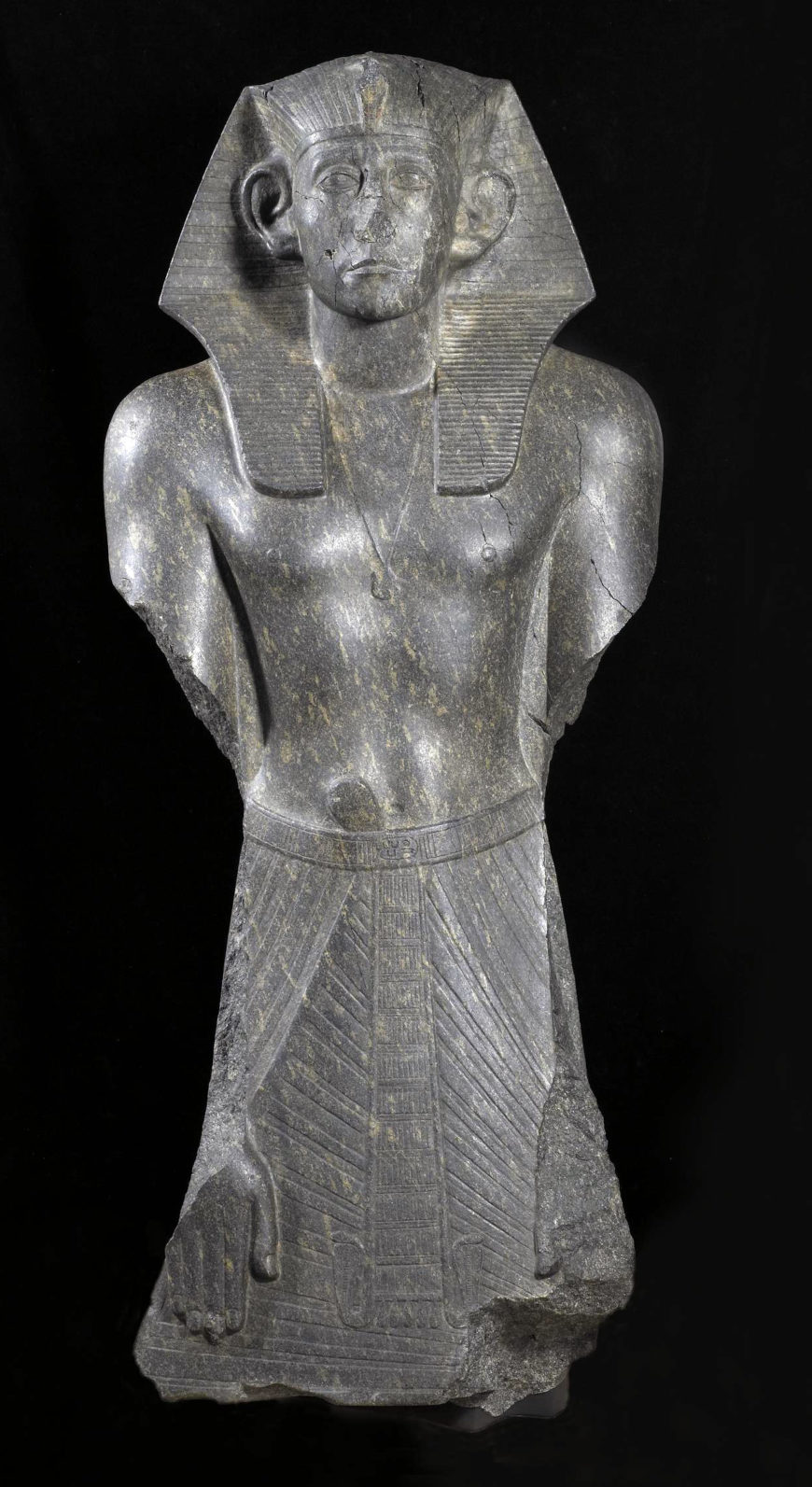
Statue of Senwosret III (Senusret III), c. 1850 B.C.E., 12th Dynasty, ancient Egypt, incised granite (granodiorite), found at the Temple of Mentuhotep, South Sourt, Deir el-Bahari, 122 cm high (© Trustees of the British Museum)
The statues, which show Senwosret in the attitude of prayer, standing with his hands flat on the front of his kilt, are the earliest examples of this devotional pose. In contrast with his youthful, muscular torso, the king’s face is depicted with expressive furrows and lines. His large ears may symbolize the ruler’s readiness to listen. This new style of representation, so different from the idealized portrayals of royalty in other periods, is characteristic of this reign.
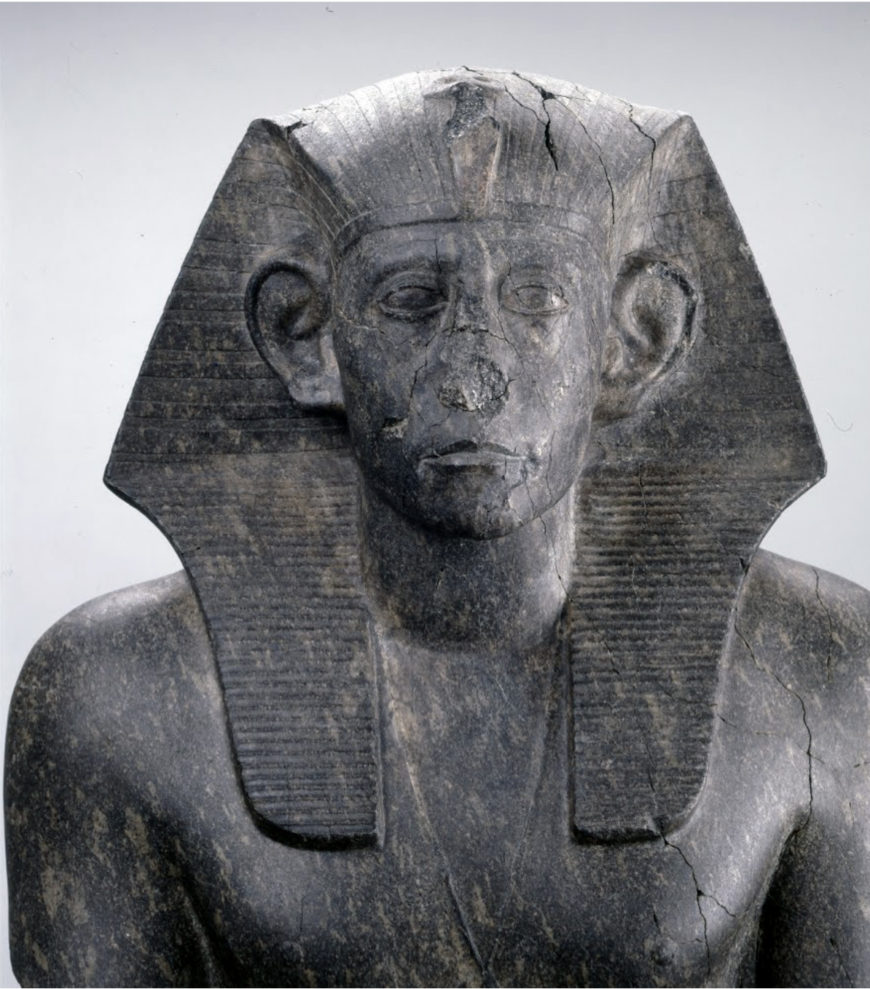
Statue of Senwosret III (Senusret III), c. 1850 B.C.E., 12th Dynasty, ancient Egypt, incised granite (granodiorite), found at the Temple of Mentuhotep, South Sourt, Deir el-Bahari, 122 cm high (© Trustees of the British Museum)
Contemporary poetry spoke of how the heaviest burden, that of rulership, lay on the king, and this powerfully modeled portrait seems to reflect that. The expressiveness of the portrait is royal rather than personal. One Egyptologist, T.G.H James, has described it as a “portrait of responsible kingship.”
© Trustees of the British Museum


